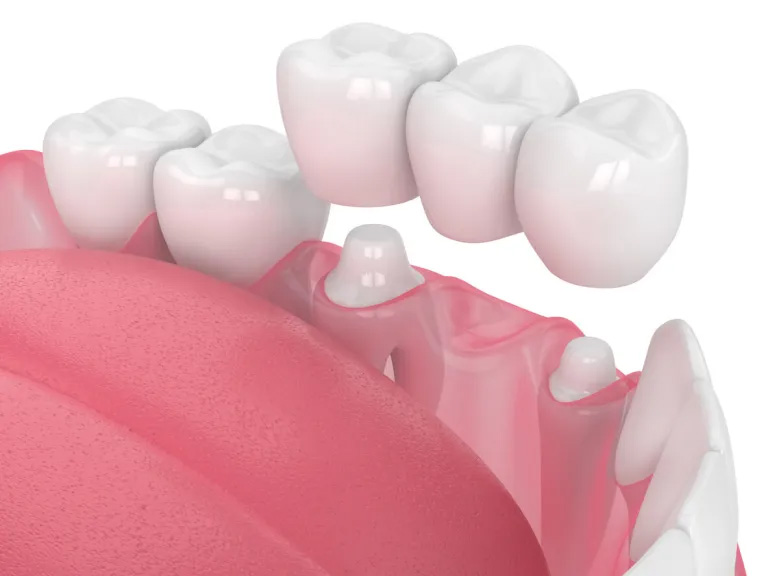Existing Patients
(770) 475-3600
New Patients
(770) 526-9210

If you have missing teeth, our dentist can close or bridge the gaps with a dental bridge. A bridge helps you to regain both the functionality and cosmetic appearance created by a missing tooth. There are several types of bridges available. Have a discussion with your dentist to determine which is best for you.
Traditional Dental Bridge – Traditional bridges are the most common and popular style of bridge. A traditional bridge consists of one or more pontics (synthetic teeth) and are fastened in place with dental crowns, sometimes referred to as abutments. Traditional bridges can be the solution for you when you have natural teeth on each side of the gap.
Cantilever Bridge – Cantilevers bridges are another option to replace missing teeth. It is a similar procedure to the traditional bridge, but the pontic is only supported by an abutment on one side. This can be a successful treatment plan when there is only one natural tooth next to the gap. This option is usually recommended for teeth in the front.
Maryland Bridge – A more conservative approach to the traditional bridge. With a Maryland Bridge, the pontic is fastened in place by a metal or porcelain framework. This framework is bonded to the back of the two teeth next to the missing tooth. While less invasive than a traditional bridge, one drawback is that the strength of the bridge is limited to the strength of the bonding resin that is holding it in place. This is also recommended usually in the front since occlusion forces are less in the anterior area.
Implant-Supported Bridges – Implant-supported bridges can be used when you have more than one missing tooth. Instead of being supported by crowns or frameworks as with traditional and Maryland bridges, these bridges utilize dental implants for their structural support. Generally, one implant is placed for each missing tooth and the series of implants holds the bridge in place.
A Bridge procedure is like the one we do for crowns. Dr. Austin will perform a thorough examination including x-rays to determine if you are a viable candidate for a bridge. She will then cut some tooth structure, just enough to fit the bridge. An impression of your teeth will be made, and it will be sent to the lab to have your customized bridge crafted. In about two weeks, your bridge will be ready. In the meantime, your dentist will place temporary bridge on your teeth.
To discuss how a dental bridge can improve your smile and functionality, please call us or request an appointment online.
*Credit to Karina Morazzi Photography
Invisalign®, the Invisalign logo, and iTero®, among others, are trademarks and/ or service marks of Align Technology, Inc. or one of its subsidiaries or affiliated companies and may be registered in the U.S. and/or other countries.